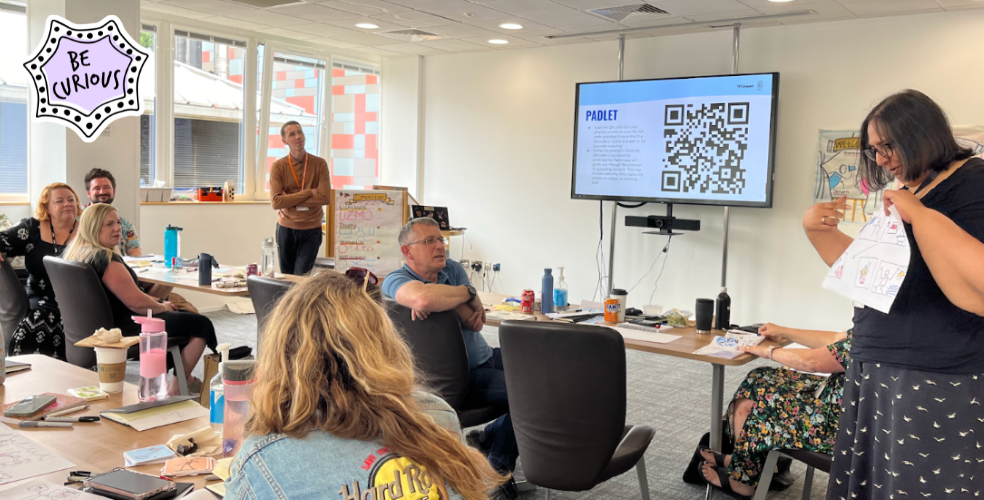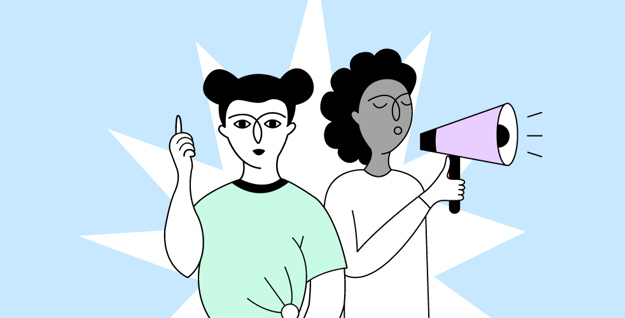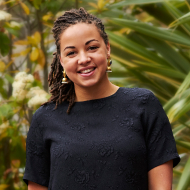The cost of living crisis and the economic impact of Covid-19 are two of the latest blows for people experiencing, and at risk of experiencing, poverty across England.
In the summer of 2022 we embarked on an ambitious programme with Central Bedfordshire Council to help lift people out of poverty and stop people falling into poverty. The approach was bold, in part, because we supported the council through a process of co-design — shifting the way in which decisions were made.
Co-design is the activity of bringing people who are affected by a problem together with frontline staff, experts, decision-makers and designers to come up with solutions. For this programme of work, this meant sharing decisions on how to tackle poverty with residents.
It was also bold because we used the power of storytelling to gain a deep and nuanced understanding of how poverty is experienced by people living locally. Surfacing, listening to and sharing residents’ stories of their lived experience of poverty at different points in the design process meant that solutions were developed from a place of deep understanding, compassion, and a shared motivation to change things for the better.
Here's how we used the power of storytelling to create these important conditions for change.
1) Listening to people often marginalised and most affected
At the beginning of our work with Central Bedfordshire Council we met residents in their local communities to listen as they bravely opened up about their experiences. On a very hot afternoon in July, a circle of people sat together and spoke about how their lives were being impacted by poverty.
Many of the eight residents had felt that they were constantly trying to navigate a complicated system to get the help they needed and were entitled to. This storytelling workshop allowed them to feel heard.
It also provided new ways of understanding how these issues affect their lives, opening up new perspectives on something the council had been grappling with for a long time. Asking residents to tell us the story of their journey into poverty, with the intent that we would work together to try to change things for the better, opened a gateway for people to have influence over decisions they are normally not party to.
"It was one of the most fulfilling things I have done recently. I felt listened to, valued. When you say things and they listen, there is something that is very comforting about it. By participating I truly hope that change is going to come."Resident
2) Building empathy and identifying strengths
As residents listened to each other's stories the emotion in the room was palpable. We heard how some had overcome challenging childhood experiences in foster care, poor mental and physical health, as well as the shocks of bereavement, break down of relationships or loss of family income.
To really understand the complexity of their experiences it was important to give people the opportunity to focus on where they find strength, so we also asked residents to share stories about their assets — such as relationships, community, or faith groups.
Their resourcefulness and bravery shone through in these stories, along with plenty of examples of solutions that residents had created for themselves. Connections began to emerge across the group and impromptu side chats turned into self organised WhatsApp groups.
After building empathy, safety and confidence among the residents in this way we created a co-design team made up of councillors, council staff, public and voluntary sector staff and residents.
As the starting points of view around the issue of poverty were disparate, on day one of co-designing together we ran an ice breaker inviting everyone in the room, regardless of their background or level of professional influence, to describe a time when they’ve received help and what that meant to them.
“Everybody in the room told a story with a personal example and people cried. It was really heartfelt and it just showed everyone's humanity — that everybody needs support and to feel connection.The whole tone of the room shifted between that icebreaker and then listening to the recorded voices of the residents,” said Laura Billings, Partner at TPXimpact, who led this work.
As this example shows, sharing stories builds empathy by highlighting common experiences. Hearing how everyone in the room had received help at some point made co-designers more accepting of what they heard in the residents’ stories.
Beyond this council, a commonly found narrative around poverty is that people living in poverty are at fault for their situation. By hearing first hand accounts of the circumstances and challenges the residents had been through, this group of people from very different sides of the debate came together around a shared understanding of how poverty and hardship affects people's lives. With this shared perspective of poverty, the co-design team were able to begin working together to find solutions.
3) Bringing research to life, and sparking the conversations needed to instigate change
Using a combination of text, audio and photos we brought our research to life through an immersive exhibition, offering different levels of immediacy and emotion in conveying the root causes and lived experiences of poverty.
The exhibition combined the emotive power of recorded voice, with sensitively shot photographs of the residents in places that meant something to them, sparking the conversations needed to instigate change.
"Listening to the lived experience of residents really brought to life why we're here… Working with residents and members in this way was a unique opportunity I've never seen in 35 years of local government."Staff co-designer
As Laura Billings notes, the exhibition enabled the research to become more of a physical experience.
“People were standing shoulder to shoulder, looking at the same material. They were pointing things out or chatting or moving around. It wasn’t passive. So they spoke to one person about something and then another person about something else. The whole thing just had a bit more fluidity to it and became more of a shared experience,” she says.
It’s important to note here that storytelling in this context comes with the responsibility not only to change hearts and minds, but to maintain the dignity and agency of the people whose story you are telling.
When making an exhibition, creating an image, or recording and editing a voice, the share of power cannot be overlooked. In fact, it must be constantly attended to. We set up a process of informed consent, and gave residents control over and involvement in the creation of their story right from the off. Working with a professional photographer and sound recordist gave the stories the gravitas they deserved.
4) Inspiring people to take action
Thanks to the power of storytelling the co-design team was really well informed when it came to developing potential solutions. For many of the staff and councillors that meant working with a new understanding of the problem they were trying to solve, and seeing new possibilities that they hadn’t seen before.
The co-designed recommendations were developed into a Fairness Plan that was presented to the council executive, who agreed to task officers with identifying what could be included into medium-term financial planning.
Our work also had powerful effects on participants in other ways. For some residents, the momentum built up from being part of this work inspired them to close the qualifications gap that had held them back, make the most of their skills and gain new employment or start a business of their own.
"I feel empowered, and appreciated. As a mum with lots of children, you don’t always feel that. This has given me some of my identity back. It's helped me think about next steps and starting my own business. The only way is up for me. There is more to life than my current situation."Resident
Through the use of storytelling we shifted the dial on perceptions of poverty. And while narratives are hard to shift and new ones take time to root, our stories planted the seeds of new ways of understanding and tackling this complex issue.
Creating the conditions for designing with people
When the issue at hand is deeply complex and entwined with people's lives, exploring their lived experiences is vital. Doing so situates a problem within a rich and expansive context, offering a human perspective into what can and needs to change.
Here, storytelling is a tool for people to speak for and of themselves, for learnings and insights to resonate across different groups, and for more precise action to be taken based on new and shared understandings.
In that way storytelling helps create the conditions for designing with people.

Visual facilitation and thinking with the Office for National Statistics
A sneak peek at our visual facilitation training with ONS, sketching, simplifying concepts, and applying visual thinking in complex contexts.
Read moreOur recent insights

Visual facilitation and thinking with the Office for National Statistics
A sneak peek at our visual facilitation training with ONS, sketching, simplifying concepts, and applying visual thinking in complex contexts.
Read more
Developing greener services principles with DEFRA
Supporting Department for Environment, Food & Rural Affairs to define shared principles that enable all to embrace planet-centred thinking.
Read more
Breaking barriers: bringing charities and the NHS together to improve patient support
We brought together leaders from charities and the NHS to discuss connecting people who are diagnosed with health conditions to charities that can support them.
Read more

